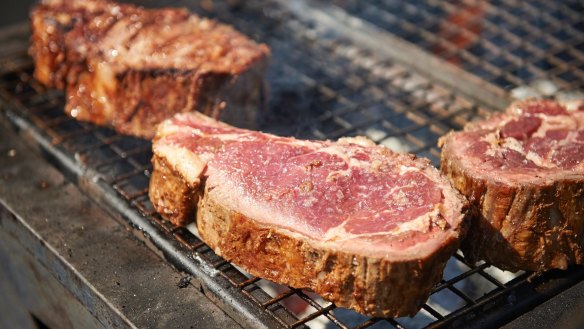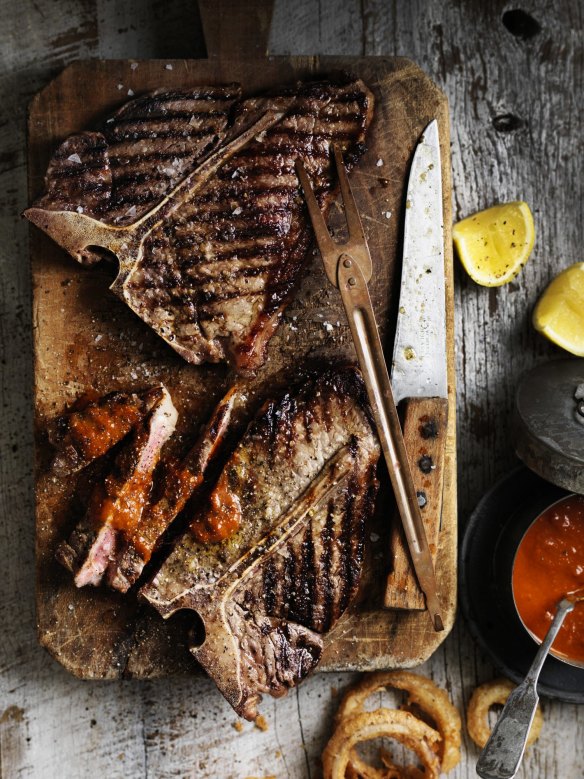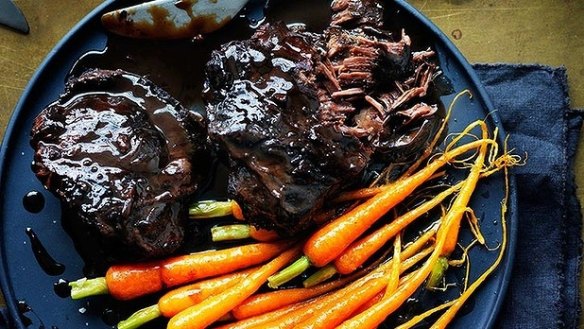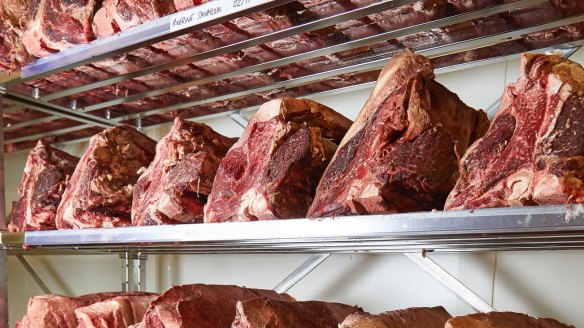Best meat cuts for the barbecue: sirloin, lamb cutlets, T-bone, dry age rib-eye on the bone

Peek over any backyard fence on a Sunday afternoon and chances are you'll spy an Australian summer ritual in full swing: kids splashing in the pool, grown-ups hovering with bevvies in hand and a small throng tending to a smoky grill.
When it comes to feeding these hungry crowds, serving up flame-licked meats is a time-honoured custom. And while the Australian barbecue is rarely a fancy feast, there are times it's worth shelling out for a special cut, says the chief executive of Haverick Meats in Sydney, Peter Andrews, whose company supplies top Sydney restaurants, including Ester, Kensington Street Social, ACME and LP's Quality Meats.
From lamb cutlets to beef cheeks, here's a guide on how to make the most of your cut of meat.

Temperature traps
To make the most of your cut of meat, make sure your barbecue is "super hot and super clean" before cooking, even if it means you have to turn down the heat when grilling begins, Andrews says. It's also crucial to let meat warm to room temperature before you start cooking it – this relaxes the flesh and allows it to cook more evenly.
"The result is more tender and more juicy with less chance of overcooking or drying out the steak," Andrews says.
Once barbecuing begins, beware the biggest trap – overcooking the meat. Instead, let the meat colour but only to the point when a little juice or blood still comes through when gently pressed. Flip once and let the other side colour, then lift the meat off the heat while it's still pink in the middle and rest it on a plate, where it will keep cooking as it cools.
"People think you have to keep touching it and flipping it but just let it be."
Best for the grill
Lamb cutlets and sirloin or scotch fillets – and yes, the ever-popular sausage – are top picks for gatherings such as Australia Day because they're affordable and easy to barbecue yet big on flavour, Andrews says.
Secondary cuts such as flank and tri-tip (tail of rump) are equally tasty and convenient options for the cost-conscious and because they're thin they cook quickly – a boon when entertaining a ravenous group.
For top flavour and succulence, Andrews suggests anything on the bone, especially T-bone or sirloin on the bone. Why? Because the bone helps the flesh retain moisture and texture.
"Anything cooked on the barbecue on the bone seems to hold up better in terms of holding its juiciness," he says.
Luxury picks
For something top-shelf, Andrews busts out the beef, most likely a thick rib-eye on the bone. If you don't feel like cranking up the barbecue, season the steak with salt and pepper and quickly seal each side in a very hot oiled pan. Move to a hot griddle, brush with butter and cook each side for a few minutes, rest then serve.
Top roasts
Lamb shoulder oyster cut is a good bet for an easy tender, flavoursome roast, Andrews says. About one kilogram with a bone in, it's slightly smaller than other cuts and great for summer. Try seasoning with a dry spice rub and don't cook it too quickly – roast at 180 degrees, probing as you go. Once the centre reaches 55C-60C, pull it out and rest on a bench to seal in the juices before carving.
A standing beef rib roast is always delicious for special occasions, too.
"I like to select a standing beef rib roast with extra marbling, which helps keep the juiciness and flavour," Andrews says.

Go slow
For rich set-and-forget casseroles, go for fattier cuts such as beef brisket or diced shoulder of pork, lamb or veal. And don't be scared to try a long braise in red wine with beef cheeks or beef short ribs. Cover with foil in a baking tray or pot, then cook in the oven at 80C-100C for 12 hours. The result is super juicy fall-apart meat, great for a hearty meal or even pulled beef or pork sandwiches.
"You just need to have more time … it has to be cooked with a bit of love," Andrews says.

Dry age
Appears in these collections
The best recipes from Australia's leading chefs straight to your inbox.
Sign up